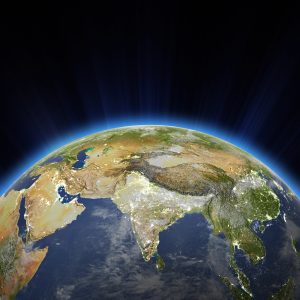According to a provisional report published by the World Meteorological Organization (WMO) back in November, the 2023 calendar year was well on its way to becoming the hottest on record in over a century.
In the lead-up to this harrowing revelation, climatologists and environmental scientists were already sounding alarm bells. But the bleak picture painted by the WMO pushed the international community to take stock of the looming crisis and course correct just in time for the New Year.
Most notably, at the 28th session of the annual Conference of Parties (COP28) in the UAE, the long-awaited Loss and Damage Fund was operationalized, securing pledges to the tune of over $700 million. Approximately 30 years in the making, donors of the fund have vowed to provide financial assistance to countries most impacted by the adverse impacts of climate change.
However, if pledges made at previous climate conferences serve as any indicator of what is to come, then it seems quite unlikely that funds will eventually reach the most vulnerable. For context, even the $100 billion a year pledged under the Paris Agreement for climate action back in 2015 remains largely undisbursed.
This lack of commitment to climate justice is particularly worrisome for South Asia, where around 2 billion of the world’s most impoverished people reside.
Despite contributing very little to the problem, countries in this region are constantly at risk of heavy monsoon rains and droughts, among other natural hazards, brought about by the rise in global average temperatures.
From monsoonal deluges that engulf nearly half of Bangladesh’s population to the parched lands of Afghanistan, a global hotspot for drought, South Asia’s climate challenges are stark. Perhaps most dire is the fate of the Maldives, an island nation at risk of disappearing entirely beneath the rising seas.
To make matters worse, most South Asian countries also lack the institutional and financial capacity to address climate-related disasters (which are becoming more frequent) due to limited fiscal space.
The average debt to GDP ratio in South Asia is a worrisome 86 percent, compared to a significantly lower 60 percent global average. And according to the Global Multidimensional Poverty Index 2023, about 389 million people – over one-third of the global total – live in “acute multidimensional poverty” in this region. As such, climate change threatens to plunge them further into the depths of poverty.
This is best exemplified by Pakistan, which experienced its most destructive flooding in the summer of 2022 when nearly one-third of the country was submerged under water. The floods incurred damages north of $40 billion, and a total of 8 million people were displaced – with as many as an additional 9.1 million falling into absolute poverty.
Given these dire circumstances, pledges and commitments to adaptation are welcome first steps towards climate equality. But will they be enough?
The answer hinges largely on accountability and action.
Without a clear strategy for disbursing and tracking funds, particularly under the Loss and Damage Fund, which serves as a beacon of hope against future disasters, these assurances risk being mere drops in the ocean – leaving South Asia drowning in broken promises.

































